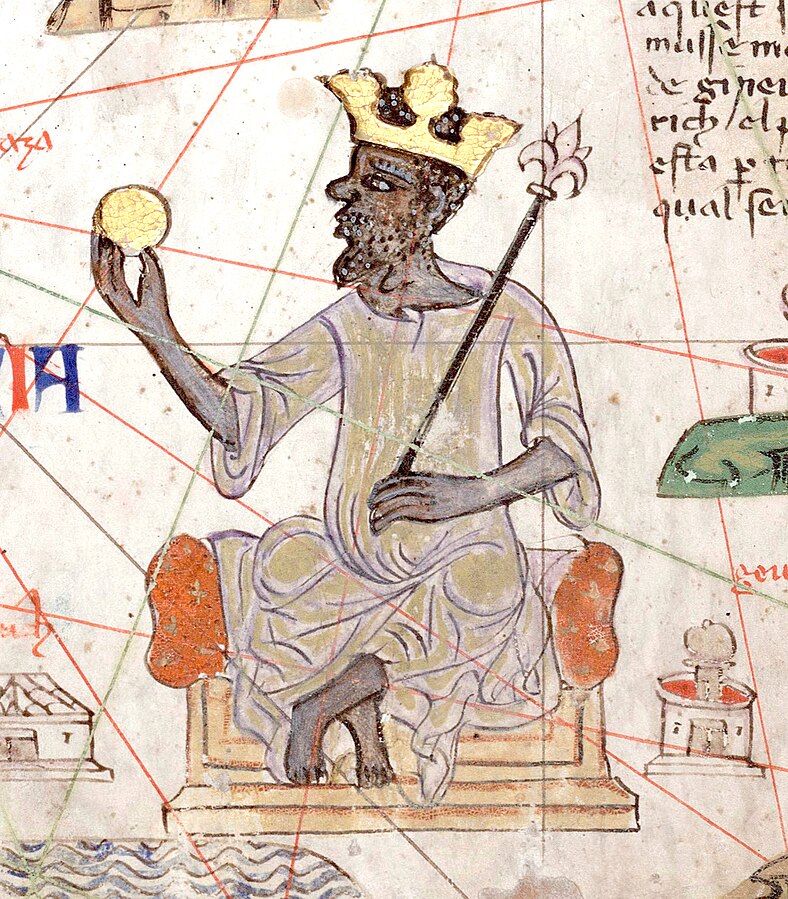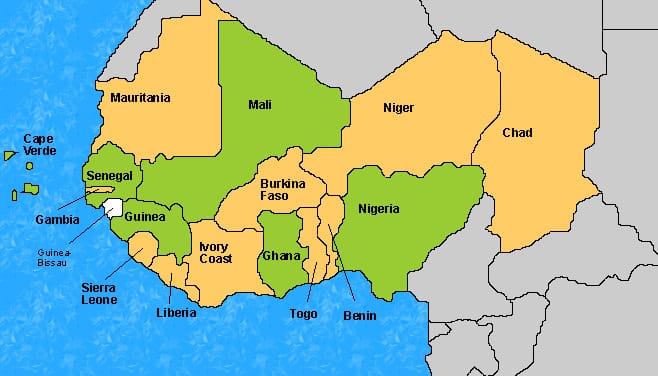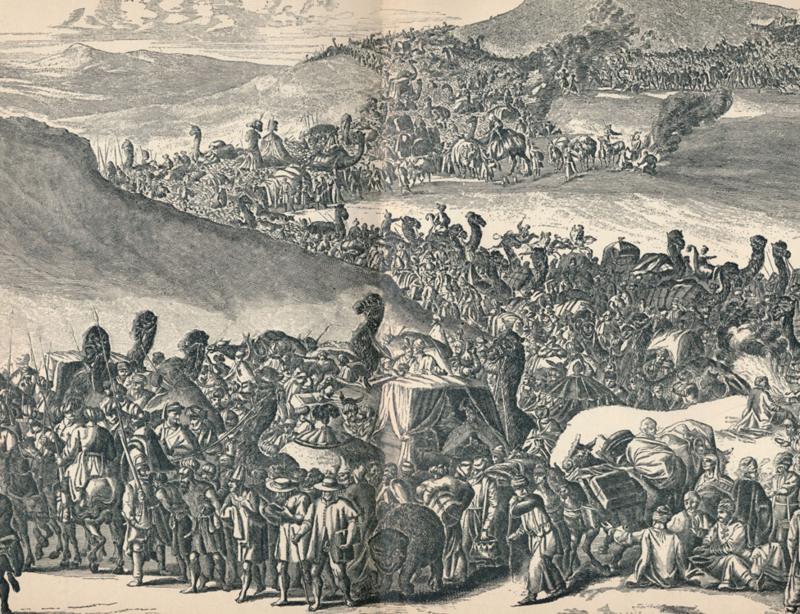People often wonder who the richest man in history is. Of course, that’s difficult to say precisely because it often means comparing wealth several centuries apart, and that’s not easy.
But there is one name that regularly appears on any list of the wealthiest people ever, and that’s a Muslim African leader that you may never have heard of: Mansa Musa.


Musa lived in the early 14th century and ruled over an empire that controlled much of present-day West Africa.
He was devout and generous, but he was also incomprehensibly wealthy. On one occasion, on a visit to Egypt, he gave gifts of gold to the Egyptian people.
This is the story of Mansa Musa, possibly the wealthiest man ever to have lived.
The Rise Of The Mali Empire
In the 12th century, West Africa was a complex network of city-states and small kingdoms. One of those was Mali (also known as Manden), located in an area of mountain and verdant forest in present-day Ghana.
By the middle of the 12th century, Mali (like most other states in the region) was threatened by the aggressive expansion of the Sosso Kingdom of Kaniaga.
Maghan Sundiata, a prince of Mali, gathered an army and comprehensively defeated the Sosso army in the Battle of Kirina in 1235.
This marked the beginning of the Mali Empire, and Sundiata was given the title Mansa (“ruler” or “Emperor”). The territory ruled by Mansa Sundiata contained wealth that was the envy of many other states in the region.
This principally took the form of three extremely productive gold mines at Bambuk, Boure, and Galam. The Mali Empire began to export gold, and it has been estimated that up to 50% of all the gold circulating in the Old World at that time originated from Mali.
Mali also exported salt and copper, both valuable resources, and through trade, it became immensely wealthy.
This Empire used some of that wealth to pay for a large army, with some estimates suggesting that it may have consisted of up to 100,000 troops, 10,000 of which were mounted cavalry.
The unmatched power of that army enabled the Empire to expand until it covered a vast region of West Africa that includes parts of present-day Mali, Senegal, Mauritania, Ghana, the Gambia, Niger and the Ivory Coast.

Records are scarce, but what we know about this Empire suggests that, while it used its army to conquer, it was not a brutal or oppressive regime. It allowed leaders in conquered areas to be elected by locals, and only an overall governor for each province was appointed by the Mansa.
Perhaps for this reason, there was little revolt against rule from Mali, and the Empire prospered and became stable.
Mansa Musa
In 1312, a new Mansa came to rule the Mali Empire. He was the grandson of Maghan Sundiata’s brother. His name was Kankan Musa Keita, but he would become famous as Mansa Musa.
We are not entirely certain about the circumstances in which he became the new ruler of the Mali Empire. He seems to have claimed that he was appointed when the previous Mansa vanished while leading a voyage of exploration into the Atlantic Ocean.
However, some historians believe he may have deposed the preceding Mansa and created this account to justify his position.
But, when he came to the throne, the young Musa (thought to have been in his early 20s when he became Mansa) inherited an empire of vast wealth that included more than 400 cities.
As a Muslim ruler, Mansa Musa was intent on undertaking a pilgrimage to Mecca (hajj) as soon as possible. Musa spent almost the first ten years of his reign in preparation to ensure that he could provide a sufficiently impressive entourage.
He went to war with neighbouring non-Muslim states and would later claim that he had conquered 24 cities in this period.
He also captured many slaves who would accompany him on his pilgrimage – estimates suggest that he may have captured up to 6,000 slaves during every single year of his early reign.
By the time he was ready to leave on his pilgrimage, his position as ruler of the Mali Empire was secure, and its borders were the largest they would ever be.
The Pilgrimage
Mansa Musa made his pilgrimage to Mecca in 1324 and 1325. His imperial procession covered more than 2,500 miles, and its progress was the first time that many of the people he encountered had ever heard of the Mali Empire.
This was a truly memorable procession intended to impress all who saw it. It was said to include over 60,000 men, all dressed in the finest silks and brocades, and more than 12,000 slaves, each carrying at least four pounds of gold.
They were accompanied by over 80 camels, each carrying over 300 pounds of gold or gold dust.
Nothing like this ostentatious display of wealth had ever been seen before. Musa gave lavishly to those he met on his long journey, including the poor and fellow travellers to Mecca.
When he reached the city of Cairo in Egypt in July 1324, his giving of gifts became even more widespread.

Having stayed for three months, when he left, he had given away so much gold that it was said that it took more than ten years for the price of gold (and the Egyptian economy) to recover fully.
Musa reached Mecca in the autumn of 1324 and remained there for a time before beginning his return journey. This was somewhat less triumphant than the outward trip.
Even Musa’s vast wealth could not support the scale of his generosity, and the Imperial caravan ran out of gold and then supplies.
By the time it reached Egypt once again, many members of the imperial entourage had died of starvation and exposure, and Mansa Musa was forced to borrow money from Muslim merchants in the city in order to fund his return to Mali.
Later Reign
On his way back from Mecca, Mansa Musa added the cities of Timbuktu and Gao to the Mali Empire. Timbuktu would become a trading centre for the Mali Empire.
When Mansa Musa began to use some of his wealth for a massive building programme, some of the most impressive new buildings were created in Timbuktu.
A lavish Imperial Palace was built and soon joined by one of the first Muslim Universities in the world and a vast new mosque. The Imperial Palace has long since crumbled to dust, but the University of Sankore and the Djinguereber Mosque still exist today.
We aren’t entirely sure when Mansa Musa died – some accounts suggest 1322, and some claim up to 10 years later. The Mali Empire endured for almost 300 years after his death, finally collapsing in the early 17th century as Africa once again saw the creation of several smaller city-states.
Today, that Empire and Mansa Musa are virtually forgotten. All that is left is the almost mythical image of a ruler so wealthy that he could give away bags of gold as if they were worth nothing.
How Wealthy Was Mansa Musa?
It is challenging to assess precisely how wealthy the Mali Emperor was. Contemporary accounts suggest that his hajj procession may have carried up to 18 tons of gold, worth something in the region of $990 million in current value.
That represented only the portable wealth available to Mansa Musa, not the total value of the Mali Empire’s treasury.

There have been attempts to convert the wealth of the entire Mali Empire, which belonged solely to its emperor, into current value. These suggest that, in current terms, Mansa Musa had a net worth somewhere in the region of $400 billion.
In comparison, Elon Musk, currently recognized as the wealthiest man in the world, has a net worth of a little under $200 billion in the region.
However you measure it, Mansa was certainly bogglingly wealthy. Was he the richest man ever? That’s difficult to say with certainty, but he would undoubtedly make any list of the top ten richest men in history.
Conclusion
Gold has been a valuable commodity for almost as long as human societies have existed. Wealth has often been measured in terms of the amount of gold an individual possesses.
The gold mines of Mali ensured that Mansa Musa had access to an unimaginable amount of gold. That gold left a perception of a ruler of truly immense wealth.
That perception was encouraged by Musa himself, who told those he met that gold “grew like plants” within his kingdom.
Before his pilgrimage to Mecca in 1324/1325, Mansa Musa and the Mali Empire were virtually unknown outside West Africa.
The magnificence of his huge retinue and the way that he gave away gold on his journey as if it were of no consequence brought this ruler and his Empire to the attention of the world.
Musa created a myth of an African country where gold was as common as stone. When European nations began to colonize Africa in the 19th century, they were partly driven by legends of vast gold mines, which are likely attributable to Mansa Musa’s ostentatious wealth.
Sources
https://education.nationalgeographic.org/resource/mansa-musa-musa-i-mali/












Leave a comment